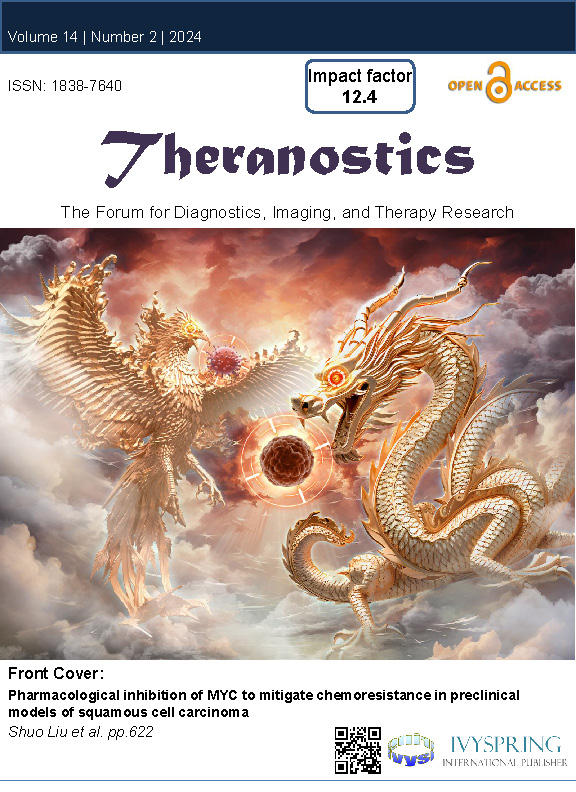Nanotechnology based gas delivery system: a “green” strategy for cancer diagnosis and treatment
IF 12.4
1区 医学
Q1 MEDICINE, RESEARCH & EXPERIMENTAL
引用次数: 0
Abstract
Gas therapy, a burgeoning clinical treatment modality, has garnered widespread attention to treat a variety of pathologies in recent years. The advent of nanoscale gas drug therapy represents a novel therapeutic strategy, particularly demonstrating immense potential in the realm of oncology. This comprehensive review navigates the landscape of gases endowed with anti-cancer properties, including hydrogen (H2), carbon monoxide (CO), carbon dioxide (CO2), nitric oxide (NO), oxygen (O2), sulfur dioxide (SO2), hydrogen sulfide (H2S), ozone (O3), and heavier gases. The selection of optimal delivery vectors is also scrutinized in this review to ensure the efficacy of gaseous agents. The paper highlights the importance of engineering stimulus-responsive delivery systems that enable precise and targeted gas release, thereby augmenting the therapeutic efficiency of gas therapy. Additionally, the review examines the synergistic potential of integrating gas therapy with conventional treatments such as starvation therapy, ultrasound (US) therapy, chemotherapy, radiotherapy (RT), and photodynamic therapy (PDT). It also discusses the burgeoning role of advanced multimodal and US imaging in enhancing the precision of gas therapy applications. The insights presented are pivotal in the strategic development of nanomedicine platforms designed for the site-specific delivery of therapeutic gases, heralding a new era in cancer therapeutics.基于纳米技术的气体输送系统:癌症诊断和治疗的 "绿色 "战略
气体疗法是一种新兴的临床治疗方式,近年来在治疗各种病症方面受到广泛关注。纳米级气体药物疗法的出现代表了一种新的治疗策略,尤其在肿瘤学领域显示出巨大的潜力。本综述介绍了具有抗癌特性的气体,包括氢气 (H2)、一氧化碳 (CO)、二氧化碳 (CO2)、一氧化氮 (NO)、氧气 (O2)、二氧化硫 (SO2)、硫化氢 (H2S)、臭氧 (O3) 以及更重的气体。为确保气体制剂的疗效,本综述还仔细研究了最佳输送载体的选择。论文强调了工程刺激响应输送系统的重要性,该系统可实现精确和有针对性的气体释放,从而提高气体疗法的治疗效率。此外,论文还探讨了将气体疗法与饥饿疗法、超声(US)疗法、化疗、放疗(RT)和光动力疗法(PDT)等传统疗法相结合的协同潜力。它还讨论了先进的多模态和 US 成像技术在提高气体疗法应用精确度方面的重要作用。报告中提出的见解对纳米医学平台的战略发展至关重要,这些平台是为治疗气体的特定部位输送而设计的,预示着癌症治疗的新时代即将到来。
本文章由计算机程序翻译,如有差异,请以英文原文为准。
求助全文
约1分钟内获得全文
求助全文
来源期刊

Theranostics
MEDICINE, RESEARCH & EXPERIMENTAL-
CiteScore
25.40
自引率
1.60%
发文量
433
审稿时长
1 months
期刊介绍:
Theranostics serves as a pivotal platform for the exchange of clinical and scientific insights within the diagnostic and therapeutic molecular and nanomedicine community, along with allied professions engaged in integrating molecular imaging and therapy. As a multidisciplinary journal, Theranostics showcases innovative research articles spanning fields such as in vitro diagnostics and prognostics, in vivo molecular imaging, molecular therapeutics, image-guided therapy, biosensor technology, nanobiosensors, bioelectronics, system biology, translational medicine, point-of-care applications, and personalized medicine. Encouraging a broad spectrum of biomedical research with potential theranostic applications, the journal rigorously peer-reviews primary research, alongside publishing reviews, news, and commentary that aim to bridge the gap between the laboratory, clinic, and biotechnology industries.
 求助内容:
求助内容: 应助结果提醒方式:
应助结果提醒方式:


